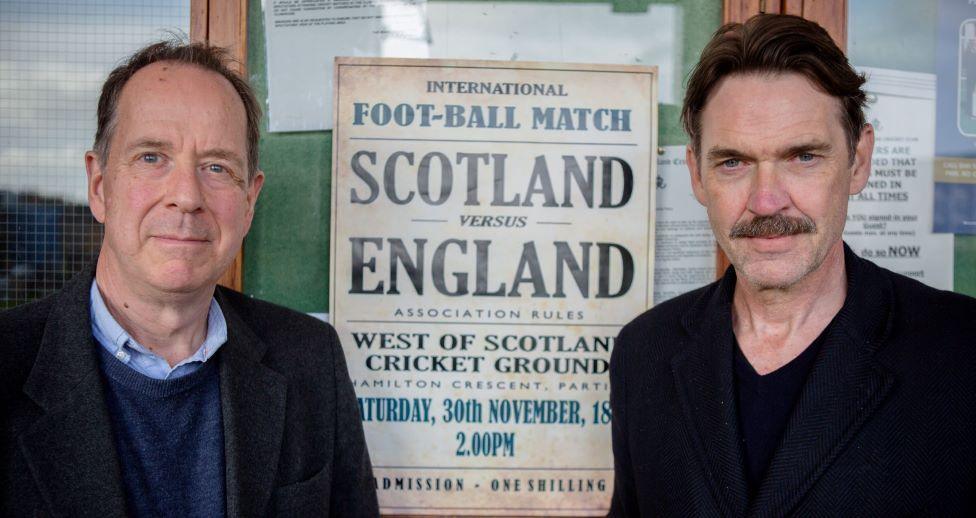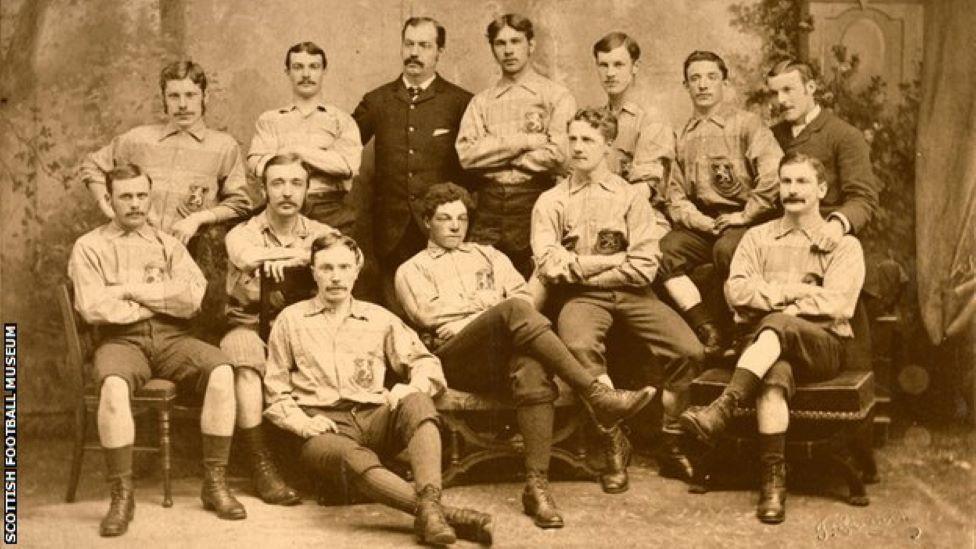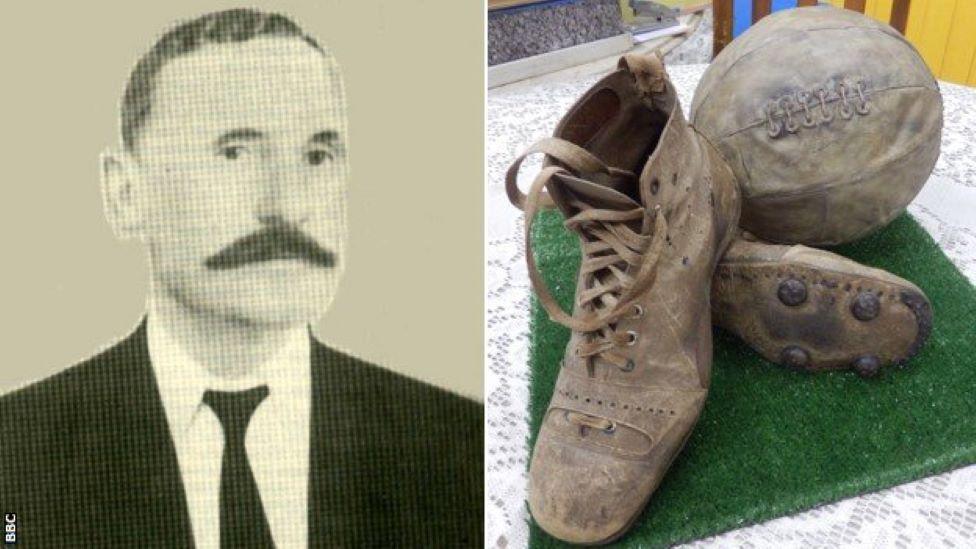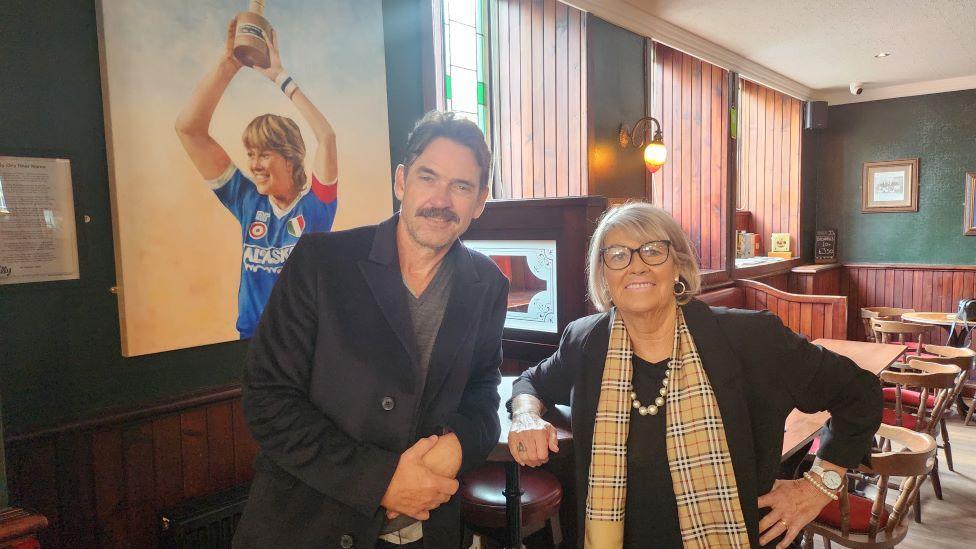The football team who invented the beautiful game as we know it

Hollywood actor Dougray Scott will look at Scotland's contribution to football in a new documentary
- Published
They are the Scottish team to whom every footballer, from Maradona to Messi, owes a debt.
Now a new documentary will explore the long-lasting influence of the Queen's Park side of the 1870s, as well as other footballing trailblazers from Scotland.
Dougray Scott: Bringing Football Home will feature the actor and avid football fan examining how Scots helped shape the sport, in both the men's and women's games.
It will also showcase individuals, such as Andrew Watson, the first black international footballer who captained the Scotland squad in 1881.
Arguably the biggest influencers will be Queen's Park, who dominated the Scottish game in its early development.
Famously, the first ever Scotland team that took the field on 30 November 1872 at the West of Scotland Cricket Ground in Glasgow was comprised of players from the Spiders, and the way they played had enormous repercussions for the sport.
Experts told the programme how the Scots were the first team to use what was dubbed "combination football" - regularly, passing the ball back and forth to each other.

Dougray Scott is joined by football historian Andy Mitchell on the programme
Prior to this the majority of teams, including the England side that faced Scotland, simply dribbled the ball as individuals and rarely sought out teammates.
Mr Scott explained: "Scotland did something that was so simple and yet so beautiful. They passed the ball to each other. They played as a team.
"The home team was dominated by Queen's Park, and how they played would redefine football forevermore."
Dougray Scott: Bringing Football Home
- Attribution
The day Scotland hosted the first football international
- Published30 November 2022
The 'most influential' black footballer & his slave trade link
- Attribution
- Published12 October 2021
Over the following years, more and more teams copied the passing style, and what modern followers of the sport would recognise as the beautiful game began to emerge.
But the documentary will also show the influence they had off the pitch, with the original Hampden Park providing a model for how fans could watch the sport.
Graeme Brown, of the Hampden Collective group, explained: "The template for every football ground ever built follows the first Hampden Park.
"The turnstiles, the use of season books... Queen's Park basically developed the way you watched the game."
Mr Brown is currently campaigning for the original ground to be marked as a UNESCO World Heritage site, external.

The Scotland team that routed England 6-1 in 1881
However as Scotland's passing game led to continual routs of England, clubs south of the border took notice.
By 1880 sides such as Bolton Wanderers were offering money to Scottish players to join them.
And soon serial winners like Preston North End were heavily comprised of Scots.
The exodus of the players, dubbed the Scotch Professors, created a bitter reaction for those who remained north of the border, and fuelled an increasingly venomous row over professionalism in the sport.

Thomas Donohoe came from Renfrewshire but helped to establish football in Rio de Janeiro
However the influence of Scots did not just extend throughout Britain, but across the globe, from Burma and Canada to modern global giants such as Brazil and Argentina.
As Scots travelled the world for work, they brought football - and the passing game common in the Scottish game - to other countries.
Thomas Donohoe, an engineer from Renfrewshire helped establish the sport in Rio de Janeiro, while in Sao Paulo it was pioneered by another Scot, Charles Miller.
Richard McBrearty, curator of the Scottish Football Museum, said: "What Donohoe does is play more informal games, or kickabouts.
"Those kickabouts also include black Brazilians. They had recently been slaves and here is Donohoe playing football with them."
In Argentina it was another Scot, Alexander Watson Hutton, who is credited with introducing the sport.

Edinburgh Dynamos in 1946
But the revelations in the documentary are not entirely positive.
One section examines how the country was leading the way in women's football until the game's governing body decided to ban it in 1948, after years of trying to hinder its popularity.
Historian Dr Fiona Skillen noted that an early women's match in Glasgow descended into a riot when angry male members of the crowd invaded the pitch.
She said: " It wasn’t something they [the crowd] saw as fun or entertaining, they saw it as immoral. They were showing their ankles, they were going against society."
Even after the women's game grew in popularity during the First World War, Scottish football authorities continued to place obstacles in the path of female footballers.
Dr Skillen added: "We don’t have a formal ban until 1948, but we had an informal ban. There are notes in the records of the SFA where they are actively discouraging members from giving facilities to women's teams."

Dougray Scott meets Rose Reilly to discuss the women's game in Scotland
That discrimination continued to affect more modern players, such as feminist icon Rose Reilly, who ended up moving to Italy to pursue her career.
Although the documentary features both the good and the bad of the Scottish game, its main aim is to showcase its global influence.
Mr McBrearty said: “It’s about the beauty of the game, it’s about the art of the game. That’s our contribution.”
Dougray Scott: Bringing Football Home airs Sunday 11 February on BBC Scotland from 21:00 to 22.00.